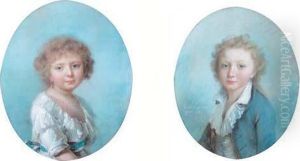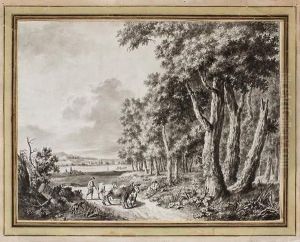Pierre Marie Gault De Saint-Germain Paintings
Pierre Marie Gault de Saint-Germain was a French painter, draughtsman, and art administrator, born in 1754 in Paris, France. He emerged as a prominent figure in the French art scene during the late 18th and early 19th centuries, a period marked by significant political and social upheaval in France, including the French Revolution and the Napoleonic Wars. Gault de Saint-Germain's career spanned these turbulent times, reflecting the changing tastes and ideologies of his era.
Educated at the Royal Academy of Painting and Sculpture in Paris, Gault de Saint-Germain quickly established himself as a talented artist with a particular affinity for portrait and historical painting. Despite the political instability of the time, he managed to gain the patronage of influential figures within both the old regime and the new political order that emerged from the Revolution. His ability to adapt to the changing political landscape, along with his skill as an artist, allowed him to navigate the complexities of this period successfully.
In addition to his accomplishments as a painter, Gault de Saint-Germain played a significant role in the administration of the arts in post-revolutionary France. He was appointed to various official positions, contributing to the reorganization of the French art institutions and the establishment of the modern museum system in France. His efforts helped to preserve France's artistic heritage during a time of great upheaval and ensured the continuation of arts education and patronage.
Gault de Saint-Germain's legacy is not limited to his paintings but extends to his influence on the French art scene through his administrative work and advocacy for the arts. He died in 1842, leaving behind a body of work that reflects the complexities of his time and a reformed art system that would benefit generations to come.

